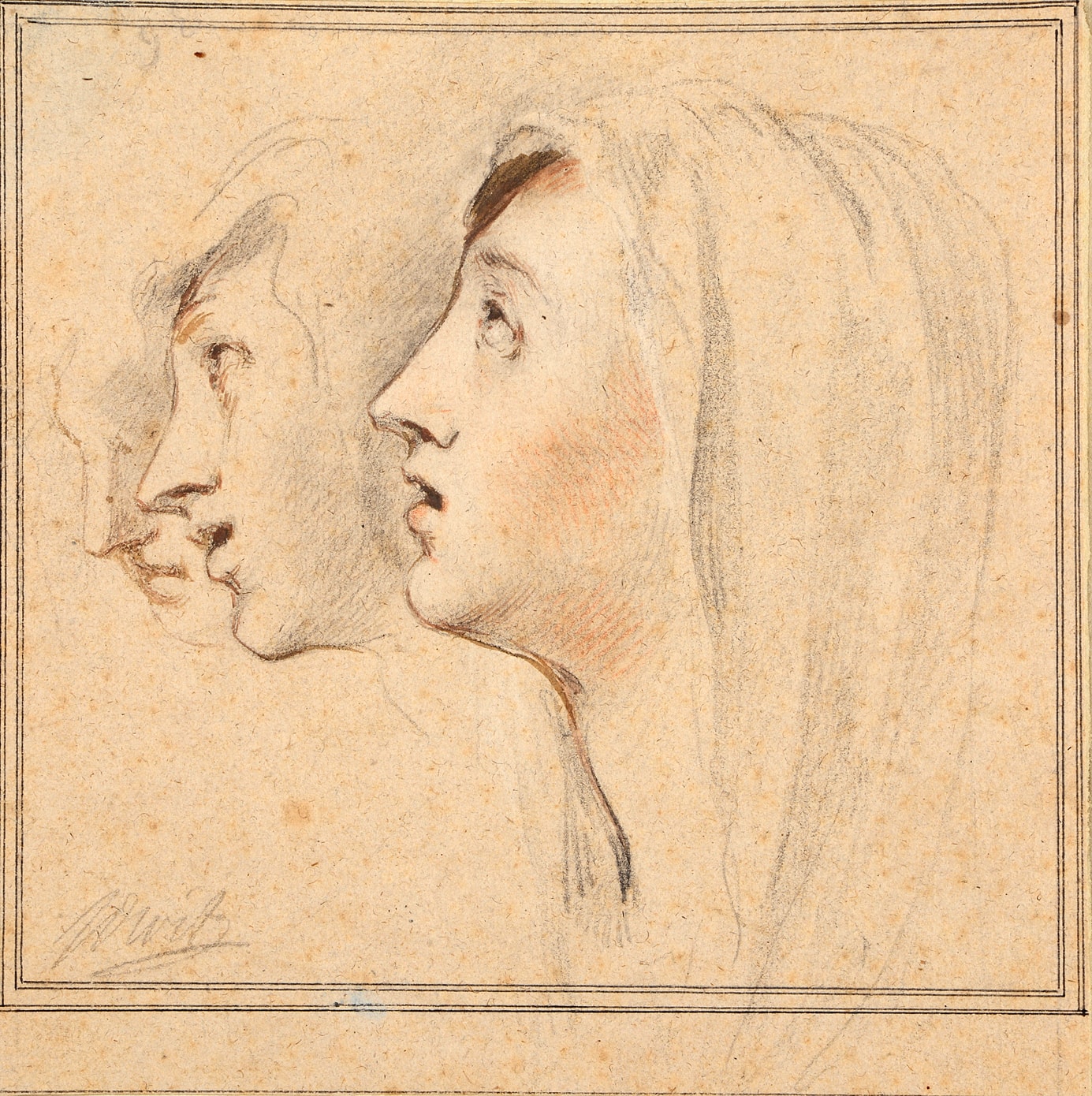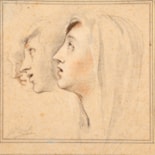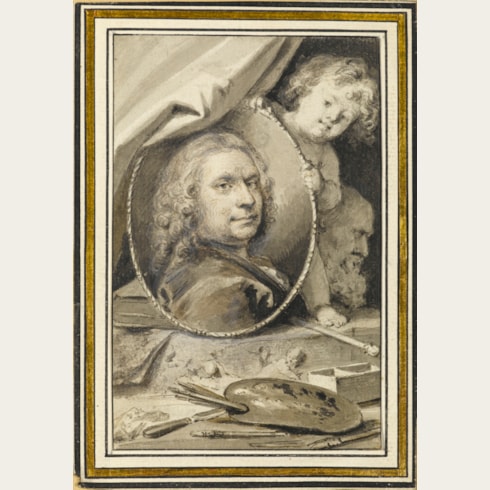Jacob de WIT
(Amsterdam 1695 - Amsterdam 1754)
The Heads of Three Women
Sold
Black and red chalk, with touches of white chalk, brush and brown ink, on buff paper.
Double framing lines in black ink.
Signed JdWit at the lower left.
Inscribed 1. 4 /4 J: de Wit at the lower left and No.5 at the lower right of the old mount.
171 x 183 mm. (6 3/4 x 7 1/4 in.) [image]
198 x 197 mm. (7 3/4 x 7 3/4 in.) [sheet]
Double framing lines in black ink.
Signed JdWit at the lower left.
Inscribed 1. 4 /4 J: de Wit at the lower left and No.5 at the lower right of the old mount.
171 x 183 mm. (6 3/4 x 7 1/4 in.) [image]
198 x 197 mm. (7 3/4 x 7 3/4 in.) [sheet]
The present sheet, which is signed in full and shows framing lines, may have been intended as an autonomous work of art, rather than a preparatory study for a painting. Jacob de Wit produced a large number of finished drawings intended for sale to collectors, which earned him a tidy income. Indeed, he was among the highest-paid artists working in Amsterdam; in 1742 alone his earnings amounted to 4,000 florins.
Perhaps a study for a painting of the Three Maries at the Tomb, this drawing may be likened to a silverpoint study of the head of a woman (possibly the Virgin?) in profile, in the Staatliche Graphische Sammlung in Munich. A drawing of what appears to be the same veiled model, also seen in profile, is in the collection of the Städel Museum in Frankfurt.
The first known owner of this drawing was the Rotterdam collector Pieter van der Dussen van Beeftingh (1794-1875), who assembled a significant collection of drawings by old and modern masters of the Dutch, Flemish, French and English schools.
Perhaps a study for a painting of the Three Maries at the Tomb, this drawing may be likened to a silverpoint study of the head of a woman (possibly the Virgin?) in profile, in the Staatliche Graphische Sammlung in Munich. A drawing of what appears to be the same veiled model, also seen in profile, is in the collection of the Städel Museum in Frankfurt.
The first known owner of this drawing was the Rotterdam collector Pieter van der Dussen van Beeftingh (1794-1875), who assembled a significant collection of drawings by old and modern masters of the Dutch, Flemish, French and English schools.
Jacob de Wit was a pupil of Albert van Spiers in Amsterdam before moving to Antwerp in 1708, at the age of thirteen, to live with his uncle, a wealthy merchant and art collector. He studied there with Jacob van Halle and also made copies after the work of Rubens, Van Dyck and other Flemish painters. De Wit was back in Amsterdam by 1715 or 1716, and soon became one of the leading artists in the city, with a particular reputation as a painter of decorative wall murals, ceiling paintings and overdoors for the town and country houses of wealthy merchants and patricians in Amsterdam. A Catholic, he was one of the few talented artists in Amsterdam in the 18th century to produce a significant body of paintings of religious subjects, in which the influence of Rubens was paramount. De Wit was given several commissions for altarpieces and large religious works, notably a very large painting of Moses Selecting the Seventy Elders for the Town Hall in Amsterdam, painted between 1735 and 1737. He was also particularly regarded for his grisaille paintings, in imitation of marble or stucco reliefs, which came to be popularly known as ‘witjes’ after the artist. Despite his success, he did not have a large studio with many assistants.
Jacob de Wit worked almost entirely in Amsterdam and never travelled abroad. As such he is perhaps better known, at least outside Holland, as a draughtsman than as a painter. At the time of his death, the contents of his studio contained between 2,500 and 3,000 drawings, which were dispersed at auction in Amsterdam in March 1755. (As his biographer Adolph Staring noted, ‘The immense quantity of studies and sketches from the sale of his atelier and of finished drawings made for collectors spread more readily over the western world than his paintings...and consequently De Wit is much better known as a draughtsman than as a painter. The printrooms of Amsterdam, Berlin, Brussels, Frankfort, Leyden, Haarlem, Paris and Vienna have assembled instructive series of different types of his drawings.’
Provenance
Pieter van der Dussen van Beeftingh, Rotterdam
His posthumous sale, Rotterdam, Dirk A. Lamme, 29-30 May 1876, lot 725 (‘Têtes de femmes. A la sanguine’
I. Q. van Regteren Altena, Amsterdam (his posthumous sale stamp [Lugt 4617] on the verso)
Thence by descent until 2013.






